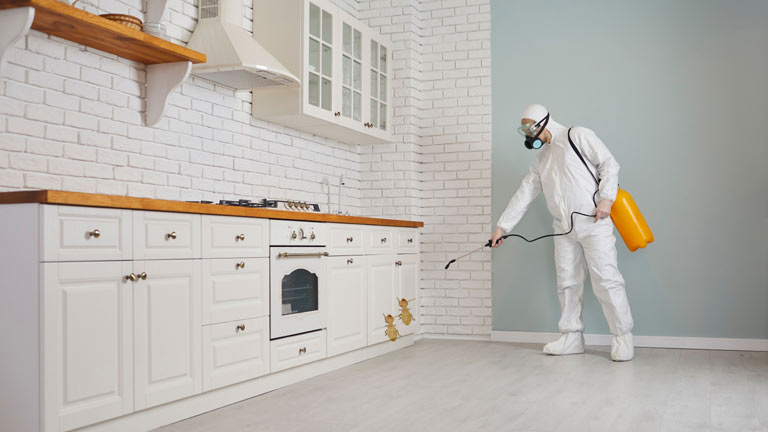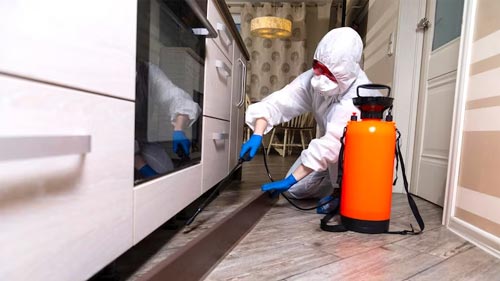 A bedbug-infested house is enough to make you weep as these little creatures love nothing more than biting you as you sleep. And considering bedbugs are so difficult to get rid of – professional intervention is often required – it’s crucial to prevent bed bugs from finding their way into your home in the first place.
A bedbug-infested house is enough to make you weep as these little creatures love nothing more than biting you as you sleep. And considering bedbugs are so difficult to get rid of – professional intervention is often required – it’s crucial to prevent bed bugs from finding their way into your home in the first place.
In this article, we’re going to cover the basics of bedbug identification and prevention. That way, you can sleep soundly through the night without letting the bedbugs bite.
How can I identify bed bugs?
Bedbugs are sneaky critters, scurrying off under the mattress or behind the bedhead to remain hidden during the day. Only at night do they come out to play, latching themselves onto a tasty human to feast.
As a result, they’re not easy to spot during an inspection. Many people try and see if dogs smelling of bed bugs will help them discover any issues before calling for professional help. Examine your sheets and mattress for a brown or milky white, oval-shaped insect about a quarter of an inch long with tiny legs and antennae. You often won’t see the bugs themselves, but you may discover evidence like rusty, reddish bloodstains, and little dark spots (feces).
The other way to identify bedbugs is through their bites, although this can be tricky as they appear similar to those of mosquitos and other insects. One tell-tale sign is bed bugs tend to bite their prey several times in a straight line over a distance of an inch or two. Although excruciatingly itchy, bed bugs don’t carry any infectious diseases. Some victims are allergic, however, which causes the bites to swell up in painful welts. Some people take help from dogs smelling it.
Where do bed bugs live?
Bedbugs thrive in warm, dark places where there’s easy access to human blood, and that’s why they love hanging around in your bed. If they’re not on the mattress itself, they could be hiding somewhere in the frame, box springs, or linen.
Bed bugs don’t exclusively live in beds; where you sleep just happens to have the best conditions for survival. If you suspect you’ve got an infestation on your hands, be sure to check your furniture, curtains, wallpaper, and any cracks in the ceiling or floor as well.
Bed bugs tend to sleep during the day and feast during the night. Their lifespan is somewhere between 6 months and a year, although they rapidly multiply, so don’t expect the problem to go away on its own.
How do bed bugs get into your home?
A common misconception purports bed bug infestations stem from poor hygiene habits; only messy, unkempt people ever have to deal with them. In reality, even the home of a fanatical neat freak is susceptible as the insects can hitch a ride inside by hiding things like clothes and bags.
The most common way to bring bed bugs into your home is when returning from a trip abroad – think of them as itchy and annoying souvenirs. The low cost of living countries with limited resources to spend on pest control is particularly vulnerable, although densely packed places like hostels and student dorms are high-risk everywhere in the world. Bed bugs also love hanging out in the cracks of second-hand furniture and are particularly skilled at burrowing their way into your bags.
What can you do to keep bed bugs out of your home?
When buying second-hand furniture, carefully examine the seams of the upholstery and any hidden crevasse for evidence of bed bug residue. And while used mattresses and bedframes offer significant savings, there might be a secret reason the seller wants to get rid of them on the cheap. To be on the safe side, give any second-hand furniture a thorough cleaning in your garage before bringing it into the home. Vacuum it all over and give it a good wash with hot soapy water.
When on the road, always inspect your mattress and sheets before calling it a night. If you do suspect an infestation, notify the hotel staff immediately and arrange to switch rooms.
If you do fall victim to bed bugs while traveling, it’s essential to kill the critters straight away to avoid bringing them to your next hotel or – even worse – your home. Immediately wash all your clothes on the hottest possible setting, and then scrub down your suitcase to brush out any eggs or bugs hiding within. Next, seal the suitcase in an airtight plastic bag and leave it outside overnight to suffocate them. As resilient as they are, bed bugs don’t do well in extreme temperatures, so exposing them to the snow or sweltering sun is equally effective.
How to get bed bugs out of your home?
If you’re suffering from a bed bug infestation at home, follow the process mentioned above on your mattress, bed frame, curtains, clothing, and any nearby furniture. It’s an arduous task that could take several attempts before the bed bugs are gone for good.
And sometimes, it’s impossible to get rid of them without professional help. For professional assistance, there are plenty of reputable pest control services that offer chemical bed bug treatment in Melbourne and elsewhere in Australia.




